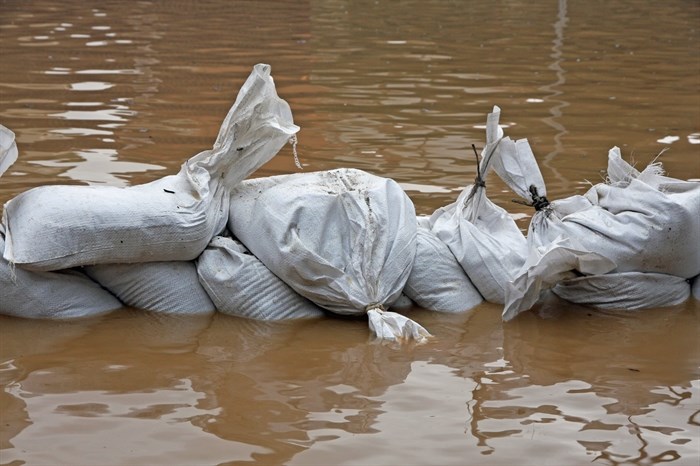
Image Credit: ADOBE STOCK
May 16, 2018 - 5:00 PM
OKANAGAN - If you live on the shores of Okanagan Lake, you might want to spend the May long weekend bagging sand.
With a massive snowpack melting away under near record temperatures and the added threat of 20 to 40 mm of rain over the next few days, flooding along the shores of Okanagan Lake this spring is a given, even if it doesn’t reach last year’s record level.
“It’s prudent for people to begin taking measures now, because no matter what, we are going to have some flooding,” Shaun Reimer says.
Reimer is head of public safety and protection for the Okanagan region of the Ministry of Forest, Lands and Natural Resources which controls the dam system on Okanagan Lake.
So far this spring, communities throughout the Okanagan have experienced localized flooding from creeks and streams forcing states of local emergency, but now it appears Okanagan Lake will flood for the second straight year.
Okanagan Lake reached 342.37 metres at 12:50 p.m. today, according to numbers from the Central Okanagan emergency operations centre, just 11 centimetres shy of full pool, the term used to describe the lake level under normal conditions.
The lake rose 5.7 centimetres in the preceding 24 hours, according to public information officer Summer Effray, putting it just 87 centimetres below the peak of 343.25 metres recorded June 11, 2017.
The lake is expected to reach full pool by this weekend and isn’t showing much signs yet of slowing down, Reimer said.
People living along the shore of Okanagan Lake who experienced flooding last year should begin taking protective measures such as sand-bagging as soon as possible, Reimer added.
“It doesn’t mean we’re going to get to the same level as last year. We’re not at panic stations yet but we’re trying to be prudent in our messaging,” he said. “Flood protection measures are easier to put in place when the lake is lower which is our message to local governments."
Municipalities bordering the lake have already begun protecting their own properties and homeowners are advised to follow suit.
Reimer pointed out considerable flood damage had already occured last year, well before the lake reached its maximum level.
Maximum outflow of the lake is 1.5 centimetres per day, however Reimer said the current outflow is one centimetre per day.
At this point, the minstry can’t increase the outflow without causing havoc downstream from the Okanagan Lake dam in places like Osoyoos and Oliver.
“If we were to go to maximum outflows right now, it would overwhelm the system and add to the dfficulties down there,” he added.
Reimer said he hopes to gradually increase the outflow from Okanagan Lake sometime next week once the water levels in the creek tributaries south of the dam start to drop.
He could theoretically release more water than the 1.5 centimetre maximum but said it would be dangerous.
“The dikes and channels down south aren’t really built for that,” he said. “We could have water scouring them out and eroding the banks. It could cause a catastrophic failure.”
Reimer said the current warm weather means Okanagan Lake is actually rising faster than last year.
“That’s a good thing and a bad thing,” he said. “It’s sending alot of water down right now. But we’re going to run out of snow soon. The hot weather is just chewing at the snow pack right now.”
Reimer said property owners looking to begin flood protection measures should contact their local emergency operations centre for information about how to best protect their property.
For the Central Okanagan emergency operation centre, call 250-469-8490. The North Okanagan emergency operations centre is 250-550-3700 and South Okanagan emergency operations centre is 250-490-4225
To contact a reporter for this story, email John McDonald or call 250-808-0143 or email the editor. You can also submit photos, videos or news tips to the newsroom and be entered to win a monthly prize draw.
We welcome your comments and opinions on our stories but play nice. We won't censor or delete comments unless they contain off-topic statements or links, unnecessary vulgarity, false facts, spam or obviously fake profiles. If you have any concerns about what you see in comments, email the editor in the link above.
News from © iNFOnews, 2018